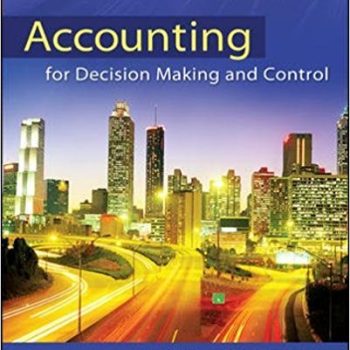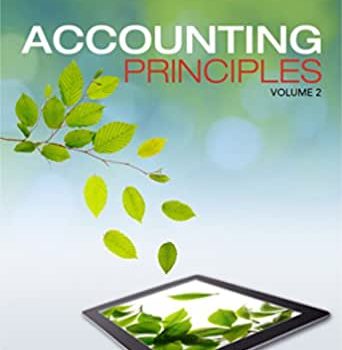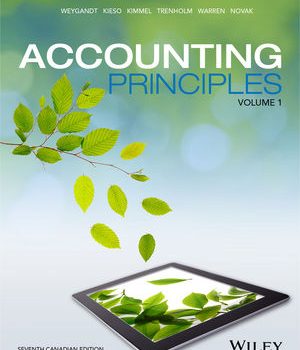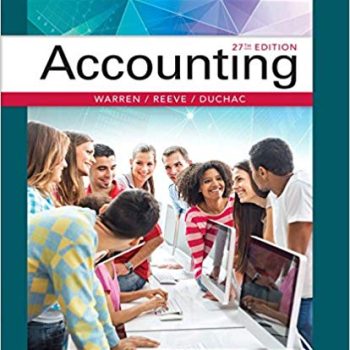Test Bank For Accounting for Decision Making and Control for the 8th Edition Solution
Chapter 2
The Nature of Costs
P 2-1: Solution to Darien Industries (10 minutes)
[Relevant costs and benefits]
Current cafeteria income
Sales$12,000
Variable costs (40% × 12,000)(4,800)
Fixed costs(4,700)
Operating income$2,500
Vending machine income
Sales (12,000 × 1.4)$16,800
Darien’s share of sales
(.16 × $16,800) 2,688
Increase in operating income$ 188
P 2-2: Negative Opportunity Costs (10 minutes)
[Opportunity cost]
Yes, when the most valuable alternative to a decision is a net cash outflow that would have occurred is now eliminated. The opportunity cost of that decision is negative (an opportunity benefit). For example, suppose you own a house with an in-ground swimming pool you no longer use or want. To dig up the pool and fill in the hole costs $3,000. You sell the house instead and the new owner wants the pool. By selling the house, you avoid removing the pool and you save $3,000. The decision to sell the house includes an opportunity benefit (a negative opportunity cost) of $3,000.
P 2-3: Solution to NPR (10 minutes)
[Opportunity cost of radio listeners]
The quoted passage ignores the opportunity cost of listeners’ having to forego normal programming for on-air pledges. While such fundraising campaigns may have a low out-of-pocket cost to NPR, if they were to consider the listeners’ opportunity cost, such campaigns may be quite costly.
P 2-4: Solution to Silky Smooth Lotions (15 minutes)
[Break even with multiple products]
Given that current production and sales are: 2,000, 4,000, and 1,000 cases of 4, 8, and 12 ounce bottles, construct of lotion bundle to consist of 2 cases of 4 ounce bottles, 4 cases of 8 ounce bottles, and 1 case of 12 ounce bottles. The following table calculates the break-even number of lotion bundles to break even and hence the number of cases of each of the three products required to break even.
|
Per Case |
4 ounce |
8 ounce |
12 ounce |
Bundle |
|
Price |
$36.00 |
$66.00 |
$72.00 |
|
|
Variable cost |
$13.00 |
$24.50 |
$27.00 |
|
|
Contribution margin |
$23.00 |
$41.50 |
$45.00 |
|
|
Current production |
2000 |
4000 |
1000 |
|
|
Cases per bundle |
2 |
4 |
1 |
|
|
Contribution margin per bundle |
$46.00 |
$166.00 |
$45.00 |
$257.00 |
|
Fixed costs |
$771,000 |
|||
|
Number of bundles to break even |
3000 |
|||
|
Number of cases to break even |
6000 |
12000 |
3000 |
P 2-5: Solution to J. P. Max Department Stores (15 minutes)
[Opportunity cost of retail space]
|
Home Appliances |
Televisions |
|
|
Profits after fixed cost allocations |
$64,000 |
$82,000 |
|
Allocated fixed costs |
7,000 |
8,400 |
|
Profits before fixed cost allocations |
71,000 |
90,400 |
|
Lease Payments |
72,000 |
86,400 |
|
Forgone Profits |
– $1,000 |
$ 4,000 |
We would rent out the Home Appliance department, as lease rental receipts are more than the profits in the Home Appliance Department. On the other hand, profits generated by the Television Department are more than the lease rentals if leased out, so we continue running the TV Department. However, neither is being charged inventory holding costs, which could easily change the decision.









Reviews
There are no reviews yet.